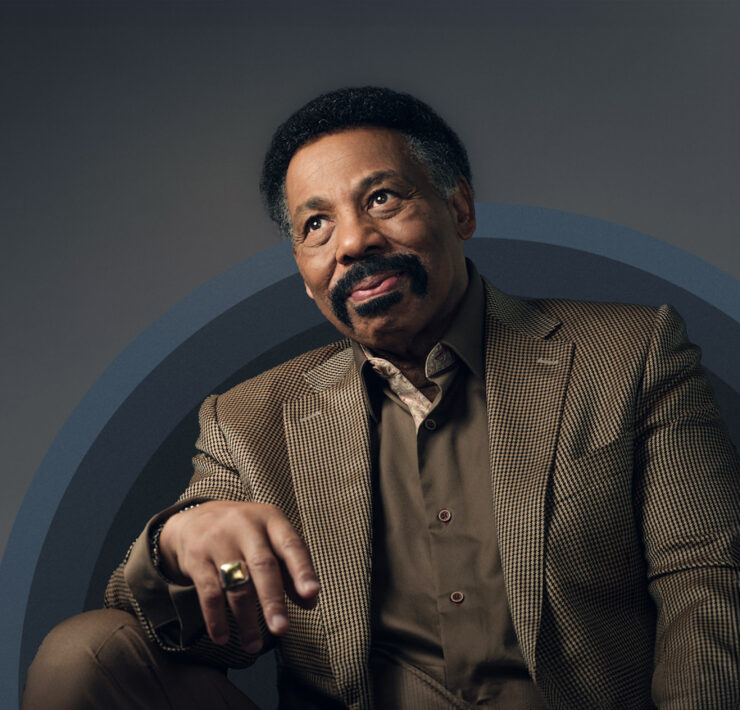I emerge out of the parking garage into the brilliant sunshine of Toronto in early April. The whir of Yonge Street, the main drag in the largest city in Canada, fills my ears. A disheveled man approaches me as I take a step toward Sanctuary, a street ministry. I’m here to interview its director, author Greg Paul.
Wearing tattered clothes and several days’ growth of facial hair, he calls out to me and asks me for some money. Half-wondering if Paul has arranged this meeting to watch my suburban reaction, I sheepishly give the man enough money for a coffee and a muffin. The man, whose hands are hardened and look leathery, turns and looks at me with piercing eyes.
“Do you believe in God?” he asks. I stutter and stammer that yes, indeed, I do believe in God. The man abruptly begins to dig in his pocket, and my life begins to flash before my eyes. He pulls out an old plastic rosary and hands it to me. “I found this in the garbage the other day, and I’ve been waiting to give it to someone who’d appreciate it. Why would anyone want to put Jesus in the garbage?” Instantly, I become simultaneously filled with joy and embarrassment as I realize the good, pure intentions of this precious man standing before me.
It turns out this “chance” meeting (arranged no doubt by God, and not Greg Paul, who arrived at Sanctuary 10 minutes after I spoke with the man) is a fitting introduction to the ministry of Sanctuary, which is a multifaceted ministry center in the core of downtown Toronto. With a strong emphasis on relational ministry among the poor, homeless and marginalized in society, Sanctuary seeks to create a community of people from disparate backgrounds in the hopes that in the midst of the community relationship, Christ might be shared in a tangible way.
“Our approach to street ministry is to view it relationally rather than programmatically,” says Paul, who has directed the center for more than 13 years. “So our approach is not to develop a bunch of programs to put people through and they come out the other end and there’s some change in them. Our approach is to say that we are fundamentally a community. We try to be a community, nurture healthy community, nurture healthy relationships. We often say about Sanctuary that we intend to be a healthy, welcoming community centered on Christ.”
In the midst of this community, the staff of Sanctuary addresses the needs of the street population. “Our approach is to walk with people, so that when we do street outreach, it’s about initiating new relationships with somebody,” Paul says. “Or being with that person we already know on their turf on the street. Hanging out with that person. We may also offer health care, socks, food, water, some practical stuff. But really those things are tangible expressions of relationship, or an invitation to a relationship, rather than an end in themselves.”
That there is even a need for street ministry on a continent as wealthy as North America is a sad phenomenon in itself. When asked about how people even end up on the streets of big cities like Toronto, Paul answers, “How people end up on the street typically is that some aspect of their personhood has been deeply compromised. Statistics show that … of youth who end up on the street, 84 percent of them will admit to having experienced physical and/or sexual abuse in the home. The vast majority come from broken homes. The vast majority come from homes where one or both parents have a drug or alcohol problem.”
In fact, Paul explained, the people seen on the street of major city centers are more likely to come from middle-class homes than poorer homes. Clearly, a church-based solution to the problem of homelessness and street-involved people is not found merely in throwing more money at the problem. Paul explains that “as to what church groups could do, it’s important to remember that these issues are as present in church communities as they are anywhere else. So, in a church of several hundred people it’s entirely likely that there are a few kids being sexually abused. It’s entirely likely that there are a number of families where one or both parents have an alcohol or drug problem. So, the first thing churches need to do is get their heads out of the sand and recognize that this is probably taking place in our own congregation. And look around the church for the people who exist at the margins.”
As evangelical churches in suburban centers come alongside the members of their community who are hurting, these people will receive the support and help they need, not only to experience Jesus in personal salvation, but to also give them a better chance at living a life of dignity.
As I think back to my encounter with the rosary-bearing saint on the streets, more of Paul’s thoughts echo in my head: “The social misconception is that street people are inherently different from you and me, or other ‘regular’ church people. And nobody thinks they believe that, until they get here to a place like this, and they start to engage with people from the street, and then they realize that at some deep level they’ve always thought that the that guy panhandling or that girl on the street corner is somehow inherently different than I am. And the big surprise is that he or she is not. That we are essentially very much the same, and that that person on the corner could very easily be me.”
In the context of community, Sanctuary is able to give people who, like this man, are marginalized and judged an opportunity to be involved in a sincere and loving community, eventually freeing them to respond in meaningful religious expression.




















